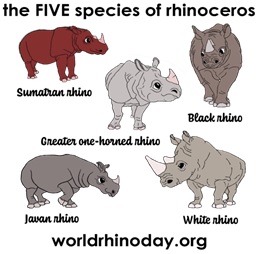

Context
According to a recent survey, the population of one-horned rhinoceros at the Kaziranga National Park has registered an increase of 200, taking the total to 2,613.
This was the 14th Rhino Population Census.
About
Key Findings:
- The survey revealed the presence of:
- 1,823 adult rhinos (above six years)
- 365 sub-adult (between three to six years)
- 279 juvenile (one to three years)
- calves 146 (0 to one year)
- Assam now has an estimated 2,845 rhinos, the highest in India, if the figures of the recent surveys in two other rhino habitats are factored in.
- The Orang National Park has 125 rhinos while the Pobitara Wildlife Sanctuary has 107 rhinos, a rise of 24 and five over the 2018 survey figures.
- The census at Manas National Park found 48 rhinos in April 2021.
|
Important facts about Rhino
Conservation Status
|
Rhino Operations in India:
Our annual operations include:
- Providing logistical support and training for wildlife crime enforcement;
- Tracking and monitoring rhinos on a continual basis to ensure their safety;
- Continuing intensive monitoring of these populations;
- Growing population by translocating animals to new, sustainable habitats;
- Working with local communities to build support for rhino conservation through education and employment;
- Habitat management, including invasive species removal.
About Indian Rhino Vision:
- It was launched in 2005.
- IRV 2020 is an initiative led by the Forest Department, Government of Assam, in partnership with WWF India, International Rhino Foundation, and several other organizations.
- Wild-to-wild translocations were an essential part of IRV2020, moving rhinos from densely populated parks like Kaziranga NP, to ones in need of more rhinos, like Manas NP.
- The goal of IRV2020 was to increase the rhino population in Assam to 3,000 by establishing populations in new areas.
- Rhinos are now found in four Protected Areas in Assam: Pobitora Wildlife Reserve, Rajiv Gandhi Orang National Park, Kaziranga National Park, and Manas National Park.


